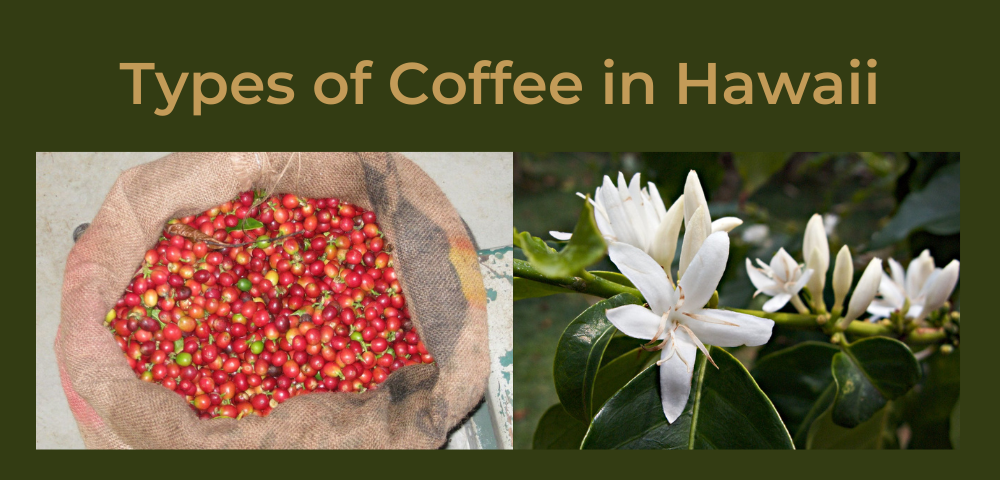
Types of Coffee in Hawaii
Hawaii is a favorite tourist destination not only for its tropical landscapes and magical luaus. It is also one of the largest coffee-producing lands in the world! There are many different types of coffee in Hawaii, all having unique taste profiles with fruity and floral notes. Which one to choose for your next cup of demitasse and which one to buy as a gift? Let’s explore the Hawaiian coffee tradition. When your appetite for coffee is whetted, you’ll be ready to check out our guide to the best coffee makers for vacation rentals.
The History of Hawaiian Coffee
The first successful coffee plantings in Hawaii were made in 1825 by the governor of Oahu. He brought Arabica coffee plants from Brazil and planted them in Manoa Valley. In 1828, the missionary Samuel Ruggles grew the first coffee tree in Kona from a piece of Manoa Valley coffee plant, and the history of Kona coffee began. The Typica coffee variety from Guatemala was brought to Kona in 1892, and it performed even better than the original kind.
In 1980, the downfall of sugar cane production began, and a new crop – coffee – started to replace sugar cane across the islands. So began the coffee renaissance in Hawaii. Now more than half of Hawaii-produced coffee comes from 4 islands – Oahu, Kauai, Maui and Molokai.
There is a big difference between the style of coffee farming in Kona and on other islands. In Kona, most coffee farms are historically small-scale operations high on volcanic slopes. Farmers here would hand pick coffee beans and often sell them to processors. Coffee on neighbor islands came to be as a replacement crop on former sugar cane plantations. That’s why these farms situate on larger flatter lands, often near the ocean. The coffee on those plots is picked by machines and then roasted, packaged and sold in-house.
Tasting All Types of Coffee in Hawaii
The coolest way to taste and buy different types of Hawaiian coffee is by visiting one of the farms that grow and sell it or a local roaster. It’s like wine tasting, but with the added focus on freshness. Unlike wines, coffee taste can’t be completely “bottled”. The freshness and the peak taste will deteriorate to some degree within a few weeks of roasting, despite the air-sealed packaging.
Below we will discuss each coffee-growing region. After that we shall make suggestions of tours, festivals, growing farms and roasteries.
Enjoy!
Types of Hawaiian Coffee by Island
Kona Coffee (Big Island)
There were several early attempts to grow coffee on different islands from the original governor’s plantings in Manoa Valley on Oahu. But only the Kona region on the Big Island remains in successful and continuous operation to this day. Kona coffee grows on the west slopes of Mauna Loa and Hualalai volcanoes. Being the leeward side, it protects coffee plants from trade winds blowing from the east. The Kona region often has sunny mornings but cloudy and often rainy afternoons. That makes it an ideal environment for the coffee plants to have the ideal environment of even temperatures and right amounts of sun and water to thrive. The nutrient-rich volcanic soil makes coffee growing conditions better than perfect!
After visiting the Kingdom of Hawaii in 1866, Mark Twain wrote: “I think that Kona coffee has a richer flavor than any other, be it grown where it may and call it by what name you please.”
There are around 600 farms that grow Kona coffee on elevations ranging from 500 to 3,000 feet. As a general rule, the higher the elevation, the sweeter, more complex and aromatic the coffee. Most farms are small in size and are family-operated. Kona Typica is the most commonly grown variety here. It used to be exclusive to Kona, but nowadays finds its way to other regions and islands.
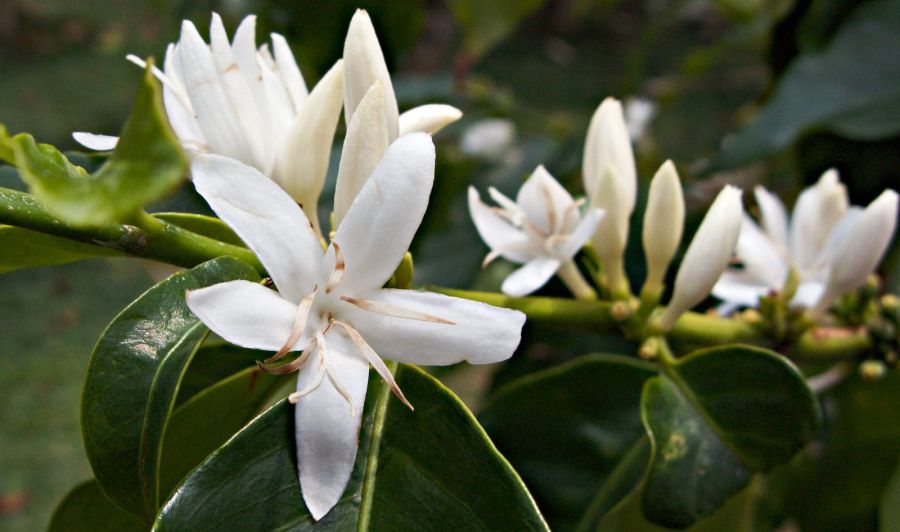
Coffee trees in Kona blossom from time to time, from January through May, when fragrant white blossoms cover coffee trees. It’s lovingly called Kona Snow, and touring coffee farms during that time can be a one-of-a-kind experience for a coffee lover.
It’s always best to pay more and buy pure Kona coffee, because so-called Kona Blends may legally contain as little as 10% Kona beans. Any blends, labeled Kona Style, can have less than 10% of pure Kona coffee, and even have any Kona beans whatsoever. The label on the package must say 100% Kona Coffee. Look for the Kona Coffee Council Seal of Approval on the package.
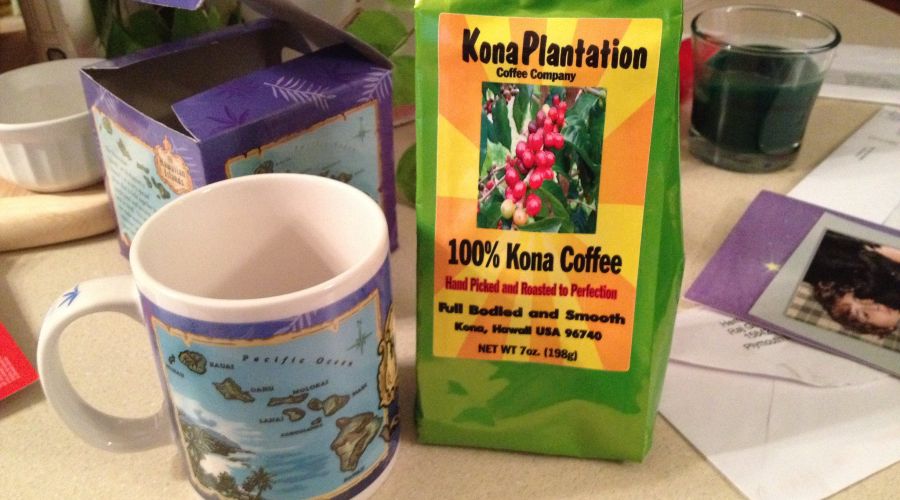
To tour Kona farms, search Kona Coffee Council database of farms and select the ones that give tours. Hula Daddy coffee has won over 20 awards since 2008. They cultivate some of the rarest and most demanding varieties.
Every November Kona celebrates its unique coffee heritage with Kona Coffee Cultural Festival. It is the oldest food festival in Hawaii, and it will celebrate its 50th anniversary on November 5-14, 2021.
Ka’u Coffee (Big Island)
Designated as the “cousin of Kona coffee”, Ka’u coffee is grown on the south slope of Mauna Loa. But it’s not in any way inferior to Kona coffee. Ka’u grown coffee keeps winning awards and ranking at the top of the world coffees. It grows at lower elevations compared to some of Kona’s coffee farms, and its taste has sweet, chocolatey notes of cherry and coconut. Sweet caramel and citrus notes are often mentioned too.
Rusty’s Hawaiian coffee farm, mill and roastery helps turn Ka‘u District into a celebrated coffee region. They craft remarkable coffees that gather awards in competitions and reviews. For great Ka’u coffee samplings, I recommend buying Rusty’s Hawaiian beans online. You can also check out the extensive list of locations that sell their award-winning coffees.
Starbucks Reserve program features Hawaii Ka’u and will brew your cup to order. They characterize Ka’u taste as “Creamy milk chocolate flavor with an almond sweetness”.
Many Ka’u coffee growers belong to a cooperative, that organizes annual festivals. In 2020, the Ka’u Coffee Festival went virtual. Check out their informative videos, a webinar and a brewing demonstration.
Puna Coffee (Big Island)
The Puna region is located directly opposite Kona. It is known to be the wettest area of the Big Island, and most of its land is lava rock. Yet Puna is not new to growing coffee. As early as the end of 19th century, coffee was the main agricultural crop in Puna and the coffee-planted area was 48 times larger than it is today! Sugar cane completely took over the original coffee plantations in 1899. Only in the 1990s, farmers started to plant coffee once again in Puna.
Visit Hilo Coffee Mill for a personalized 60-90 minute tour or a free shorter visit. Or stay in this Coffee Cottage, equipped with a commercial coffee maker and supplied with coffee grown on the farm.
Hamakua Coffee (Big Island)
The story of Hamakua coffee has a strong resemblance to the story of Puna, with the first coffee plants introduced in 1852 and sizeable plantations established soon after. As in Puna, coffee gave way to the sugar cane on the brink of the 20th century. And with the demise of the sugar cane industry, the coffee renaissance started in the mid-1990s. Like Puna, the weather here is on the cooler and rainier side, but the soils are red – different than in Puna, so the taste of Hamakua beans is unique to the area.
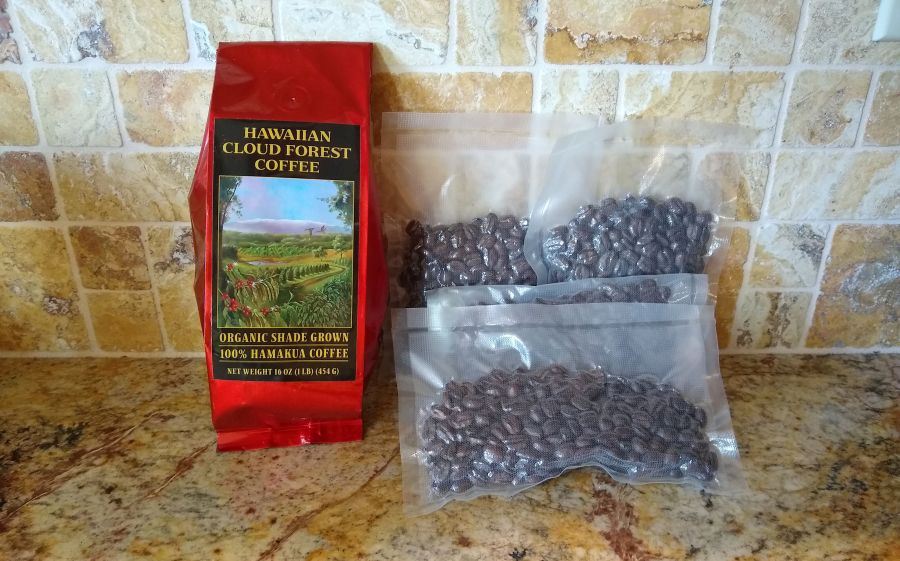
Some of the farms you can try to visit in this area are Hamakua Coffee Company and Hawaiian Cloud Forest Coffee. Email them about setting up a private visit. This will definitely be off the beaten path experience! You can buy Hamakua coffee from Big Island’s farmers markets and some local stores, including Whole Foods.
Maui Coffee
Maui is diverse in many respects. The diversity of coffee varieties, growing locations and processing methods is simply mind-blowing. Coffee is grown by farmers and backyard growers on the slopes of both West Maui mountains and Haleakala. Many families grow coffee organically. Maui coffees regularly rank among top 10 winners in Hawaii Coffee Association’s annual Statewide Coffee Cupping Competition. In 2019, Maui coffee got 3 out of 10 top places!
Maui Mokka deserves a special mention. This particular variety of Arabica coffee comes from Yemen and is said to be over a thousand years old. Nowadays, the MauiGrown Coffee farm is the only place in the world where this strain is grown and produced. They don’t offer farm tours, but you can visit the MauiGrown store in Lahaina when it reopens (currently closed due to Covid-19).
We already featured Kupa’a Farms as an innovative farm in Kula. They offer a sumptuous and detailed private coffee tour for groups of up to 6 people.
Franco family has been growing coffee since 1918. Their coffee grows at 3000-3500 feet elevation on the slopes of Haleakala. Through four generations they hand-pick, process and roast their organic coffee in Grandma’s Coffee House in Kula.
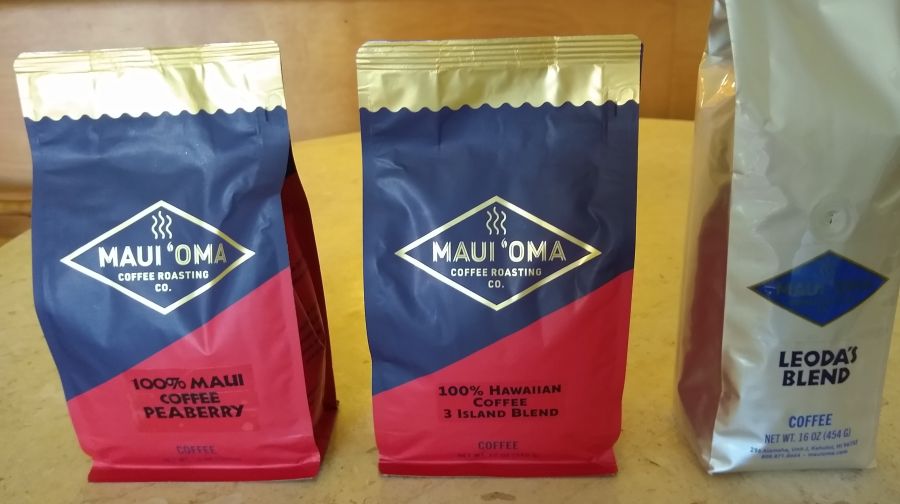
Maui Oma Coffee Roasting is a great place to buy the tastiest freshly roasted coffee at a reasonable price. Being in business for over 20 years, Maui Oma roasts blends for many fine restaurants on Maui. These restaurants include Monkeypod Kitchen, Mama’s Fish House as well as Leoda’s Kitchen and Pie Shop. Leoda’s Pie Shop might have the best pies on the island, so it’s worth visiting and see if you like their coffee blend. Maui Oma, located at 296 Alamaha Street in Kahului, is very convenient to stop by. For best pricing and availability, order on their website to pick up one business day later.
Another roaster we’d like to mention is Origin Coffee Roasters in Kihei. The founder and roastmaster Heather Brisson-Lutz established the business quite recently in 2018. Her approach to roasting is to bring forward the flavors already existing in the beans and to develop the very best taste each bean or blend has to offer. Roasted by Origin, Maui Kupa’a Orange Bourbon won accolades from Coffee Review in 2019.
Maui Coffee Association usually holds its annual Seed to Cup Coffee Competition in August. In 2020, it has been cancelled due to the Covid-19, and we are all looking forward to their date announcement for 2021!
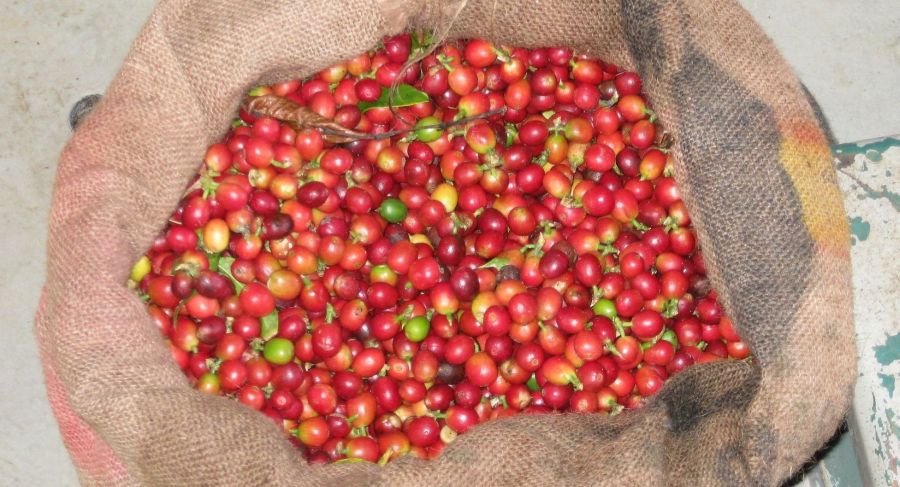
Molokai Coffee
The history of Molokai coffee began in 1986, when a company called ‘Coffees of Hawai‘i’ planted an experimental crop on Molokai’s central plain. Drip irrigation and windbreaks had to be introduced to help overcome dry and windy conditions, and the coffee plantings established quite nicely in the new location.
Muleskinner is the most famous Molokai-grown coffee. CoffeeReview.com writes on Muleskinner Dark Roast, “This unusual coffee has been dry-processed, meaning the beans have been sun-dried with the fruit still attached. The long contact with the fruit produces a sweet coffee, often, as here, overlaid with rough, musty tones that some coffee drinkers love.”
The plantation is located in the town of Kualapu‘u, about two miles from the trailhead to Kalaupapa. It has an Espresso Bar & Deli, a gift shop and a self-guided tour display.
Oahu Coffee
Oahu’s nickname is “the Gathering Place” and a good cup of joe has a way to bring people together. Places to gather for a great coffee tasting are in abundance here in Oahu.
Island Brew Coffeehouse serves 100% Hawaii coffees in partnership with Rusty’s Hawaii. Enjoy Kona, Classic Dark Roast Ka’u or Maui Mokka Peaberry made to order. These coffees are all scored over 90 by Coffee Review.
Kona Coffee Purveyors has been the state of the art coffee roastery in the heart of Waikiki since 2008. They choose the favored lots from select Kona coffee estates and roast them with precision. In 2016, they partnered with San Francisco’s b. patisserie to produce award-winning pastries on site. The pastries are served with fresh-roasted, fresh-brewed coffee, teas and juices.
Waialua Estate Coffee and Chocolate employs a unique approach to growing coffee. Two crops – coffee and cacao – grow happily together at 700 feet above the towns of Haleiwa and Waialua. Coffee and cacao harvest seasons are naturally spread 6 months apart. The same crew of people harvests and processes coffee one half of the year, and cacao – the other half. The farm doesn’t offer tours; their products are available online, including the perfect gift box of coffee and chocolate.
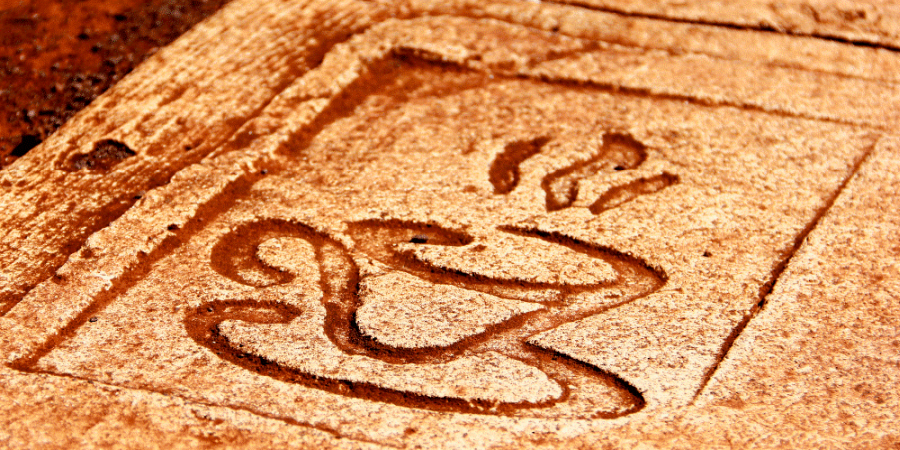
Kauai Coffee
Kauai produces more than half of all the coffee in Hawaii, thanks to Kauai Coffee Company – the largest coffee plantation in Hawaii. It’s located along Kauai’s South Shore and has over 4 million coffee trees.
Kauai Coffee Company says that their coffee is less acidic than other types of Hawaiian coffee. Their coffee is full-bodied but mild and well-balanced. It increases in popularity, and many coffee lovers now choose Kauai coffee over Kona coffee. Come to their Visitor Center to taste the entire line of estate-grown coffees. There are self-guided daily walking tours as well as the guided and personalized “Coffee on the Brain” tour. This is a great way to learn about a coffee bean journey from seed to cup.
Hanalei Coffee Roasters is a micro-roastery and café located in Hanalei. They specialize in Hawaiian coffees, and roast coffees from Kauai, Molokai, Maui and both the Kona and Ka’u growing regions of the Big Island. They serve a wide selection of coffee drinks, breakfast, and lunch items. Order their famous Kauai waffle, topped with local papaya, banana, mac nuts, coconut and whipped cream, and you’ll think you are in heaven!
Curious Facts About Hawaiian Coffee
- Hawaii-grown coffee abounds with flavors because it grows in many different climate zones. Hawaii is the only place on Earth that boasts having 10 climate zones out of the world’s 14.
- Until 2017 Hawaii was the only state in the USA to commercially grow and sell coffee. In 2017, farmers in California became the first in the continental United States to commercially produce coffee.
- There are approximately 900 coffee farms across all Hawaiian islands. Around 600 coffee farms are located in the Kona district. Hawaii Kona coffee accounts for about 95% of all coffee produced on the Big Island.
- While all major Arabica coffees in the world grow predominantly at high altitudes, Hawaiian coffee grows at the lowest altitudes of them all. Growing coffee on volcanic slopes helps produce unique flavors for the bean.
- The largest coffee plantation in Hawaii is located in Kauai – Kauai Coffee Co. It has over 4 million coffee trees.
- Hawaiian hand-processed coffee can cost from $30 to over $100 per pound. If it’s not expensive, it’s not the real deal.

Jarrod Livingston is the founder and chief editor of the site TheBrewMakers.com. The site provides tips and guides on coffee makers as well as other useful information about coffee. He is passionate about only one thing which is coffee.







